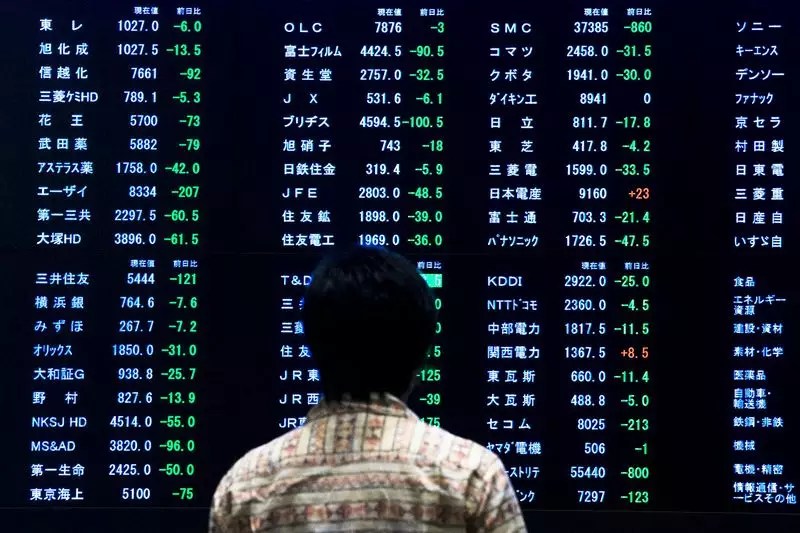The Asian stock market landscape presents a vivid picture of contrasting fortunes as regional financial indices diverge sharply amid varied economic signals and political developments. Recent trading sessions have seen Japanese stocks exhibiting remarkable strength, buoyed by positive economic indicators, while South Korean equities are faltering under the weight of political turmoil. This article delves into the latest developments across key Asian markets, highlighting the significant fluctuations, economic indicators, and the implications of ongoing political issues.
Japan’s stock market saw a notable uplift, with the Nikkei 225 index soaring by 1.5%. This surge is largely attributed to a better-than-expected inflation report from Tokyo, which revealed that consumer prices are climbing faster than anticipated, thereby reigniting speculations regarding a potential interest rate hike by the Bank of Japan (BoJ). The implications of rising inflation are significant for investors, as the monetary policy stances taken by central banks play a crucial role in shaping market momentum.
Another important aspect of Japan’s economic indicators is the slower-than-expected contraction of factory output, as reported for November. This indicates that while challenges persist, such as subdued foreign demand, Japanese industries are demonstrating resilience. Additionally, the weakening yen is further favoring exporters, notably in the automotive sector, leading to a boost in stock prices for companies like Toyota. The positive economic narrative has put Japanese equities on track for a weekly gain, indicating robust investor sentiment.
Contrasting Japan’s robust performance, Chinese markets displayed modest gains, with the Shanghai Composite and the CSI 300 Index rising by 0.3% and 0.4%, respectively. This uptick follows the release of industrial profit data, which, although reflecting a decline, showed a reduced pace of contraction compared to previous months. This slight easing of downside pressure brought a glimmer of hope amidst the broader struggles of the Chinese economy, characterized by weak domestic demand and a flagging property sector.
The World Bank’s revision of China’s growth forecast for 2024 and 2025 offers an optimistic outlook, albeit tempered by caution regarding underlying economic weaknesses. The anticipated increase in fiscal spending to stimulate economic activity will be closely monitored by investors, as they look for signs of recovery that could bolster market confidence. However, the overarching challenges continue to loom large, raising questions about the pace of any forthcoming recovery.
In stark contrast to the positivity of Japanese markets and the cautious optimism in China, South Korea’s KOSPI index struggled, witnessing a decline of over 1.5%. The political landscape has descended into upheaval following the Constitutional Court’s ongoing hearings related to President Yoon Suk Yeol’s controversial martial law. Acting President Han Duck-soo is now facing an impeachment vote, further deepening the atmosphere of uncertainty.
The ramifications of this political crisis extend beyond the immediate governance issues, with potential implications for investor confidence and foreign relations. Allies are closely watching the political developments, signaling concerns over the stability of South Korea’s democratic institutions. This political instability is detrimental to market performance, overshadowing any positive economic fundamentals that may exist.
The current state of Asian stock markets reflects a conundrum of political and economic dynamics that continue to shape the region’s financial landscape. While Japan embraces growth amidst rising inflation and a resilient export sector, China grapples with mixed economic signals and ongoing challenges. Meanwhile, South Korea faces critical political crossroads with uncertain implications for its market.
As we observe these developments, it’s vital for investors to stay informed and adaptable. The potential for volatility in political and economic realms suggests that strategies must be continually assessed in response to evolving conditions. This multifaceted scenario highlights the complexity of investing in Asia, urging stakeholders to navigate these waters with both caution and astuteness.


Leave a Reply